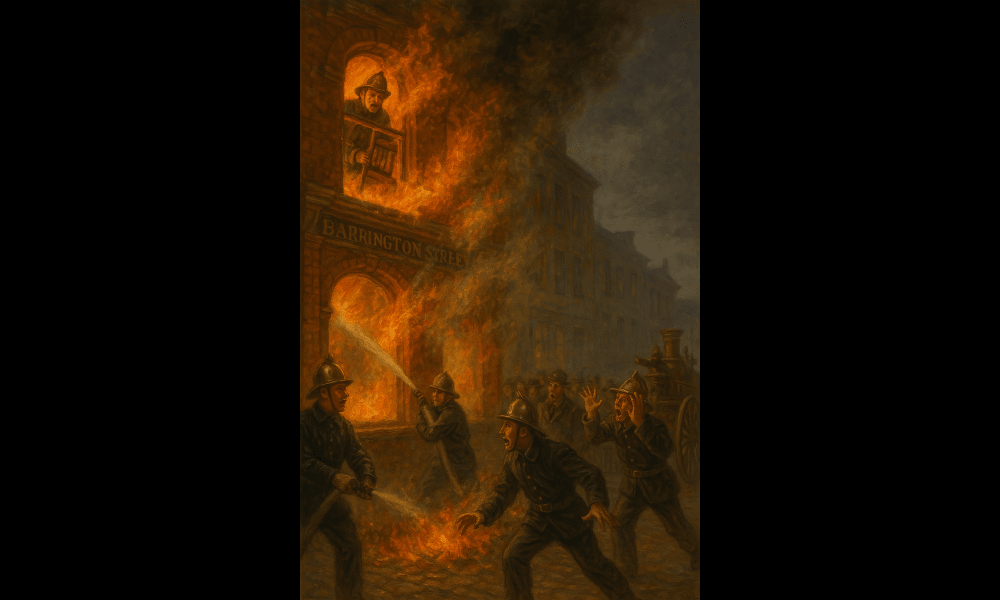In 1878, Halifax took its first steps toward formally recognizing the risks firemen faced in the line of duty, especially following a tragic incident.
On April 14, 1878, a catastrophic fire occurred on Barrington Street. Firefighter Edward Fredericks, a lieutenant in the North-End branch of the Union Protection Company, was killed in the collapse of a burning building. He had been helping to remove furniture from an office when two floors gave way due to an earlier explosion, burying him and another firefighter beneath the debris. Fredericks was crushed and died instantly.
Two days later, the Board of Firewards passed a formal resolution expressing their sympathy to Fredericks’ family and publicly commending the bravery and dedication of all firemen involved in the incident. The resolution noted his “heroic and undaunted conduct” and emphasized the collective sorrow and respect of the entire department.
Although this resolution was largely symbolic, it marked a significant moment in Halifax's fire service history. It showed the City's increasing awareness of the dangers faced by its volunteer fire personnel and its responsibility to acknowledge those sacrifices. However, no formal compensation mechanism existed at that time.
It wasn't until April 17, 1889, that the City Council was officially empowered by an Act of the Legislature to insure active firemen against injury or death incurred while on duty. Under this law, firemen could be insured for $1,000 in the event of death or severe disability, and $5 per week in temporary disability payments, up to 26 weeks.
Therefore, the 1878 incident directly preceded and arguably influenced the later 1889 legislative action, making it a pivotal moment in Halifax's move toward compensating fire personnel for injuries and duty-related deaths.


